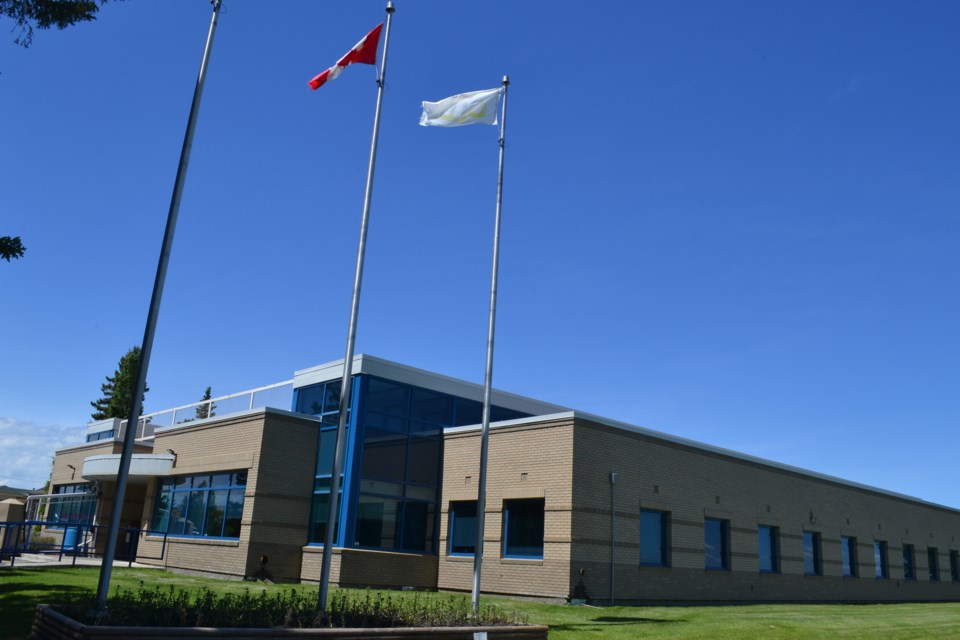OLDS — A spokesman for a proposed passenger rail service in the Calgary-Edmonton corridor says if it’s built and operating, theoretically an Olds resident could take the train all the way to Portland Ore., never having to use their car.
Thomas Fryer, executive director of Alberta Regional Rail Inc. (ARRI), made that statement to Olds town council during its Jan. 10 meeting.
The company is proposing to operate a passenger rail service between Calgary and Edmonton, likely twinning a track along the CP Rail line.
Fryer said communities between Calgary and Edmonton would be serviced, including Olds and other municipalities in the Mountain View County area.
“A professor, a teacher at Olds College, could catch the train down to the Calgary International Airport and then catch a train to Seattle and then from there catch public transit and be able to go to a college or a university in Portland or even somewhere in between,” Fryer said.
People could use the line to travel to work, attend business meetings, medical appointments, sporting events or meet family and friends.
He indicated link-ups could be made with proposed trains to Banff or to the Rocky Mountaineer sightseeing train. Passengers could also link up with transit in Calgary or Edmonton to get to their ultimate destination.
Fryer said according to studies, traffic along Highway 2 has increased over the years and is approaching capacity in some cases. He said installing passenger rail line would use less land and be more environmentally friendly.
Fryer said one major advantage of regional rail over vehicles is safety. He noted that in winter, drivers face hazards from ice, snow and blizzards. Vehicles frequently end up in the ditch or the central divider.
Sometimes one or more lanes are completely blocked, due to weather conditions or accidents.
A rail line would cut down on the number of vehicles on the road, thereby at least delaying the need for further QEII expansion.
He said drivers have to concentrate on the road to arrive safely whereas rail passengers can relax and take it easy or do some work on their way to their destination.
Fryer was asked what the whole project will cost. He didn’t give an overall figure but said it will cost about $7 million per kilometre to twin the entire line.
“So the line is 305 kilometres long, you can equate that as you see fit,” he said. “Or, for basic service, you’re looking at about $25 million per station. And depending on how many stations are installed, that would give you a rough idea of the cost.”
More than likely the cost will be covered by some combination of investors and provincial and/or federal funding, he said.
He said that’s why he’s been approaching municipalities up and down the Calgary-Edmonton corridor, including Olds, asking them to send letters of support.
The company plans to use those letters of support to show support for the project to investors. The later goal would be to obtain support from the Alberta government and perhaps federal government by way of a memo of understanding and/or other support.
Bowden council indicated support after being approached late last year. Fryer said ARRI has also received several letters of support from various other communities, including a couple of First Nations.
Coun. Wanda Blatz expressed interest in the project but wondered how a railway station in Olds, for example, would be paid for. Would or could the municipality be asked to cover some or all of the cost for one and for adjacent parking?
Essentially, Fryer said it’s too early to say, although he said the company would consult with the community to determine the best place for a station.
Coun. Darren Wilson noted there are several rail projects being proposed, including one or two high-speed rail proposals. At least one has signed a memorandum of understanding with the provincial government.
"Is this kind of a race? Something of a race for space in terms of who got the first gets there first? Or not necessarily,” he asked.
Fryer said one proposal is a high-speed rail project that would only serve Calgary, Red Deer and Edmonton. Another service would do the same.
By contrast, the ARRI service would serve many smaller communities such as Olds up and down the Calgary-Edmonton corridor.
“So it’s not really even a competitor to us because we’re serving a different market,” he said.
Mayor Judy Dahl also expressed interest in the idea. She suggested the proposal should be brought to the Municipal Area Partnership, a group representing six local communities.
Council voted to receive Fryer's presentation as information.



